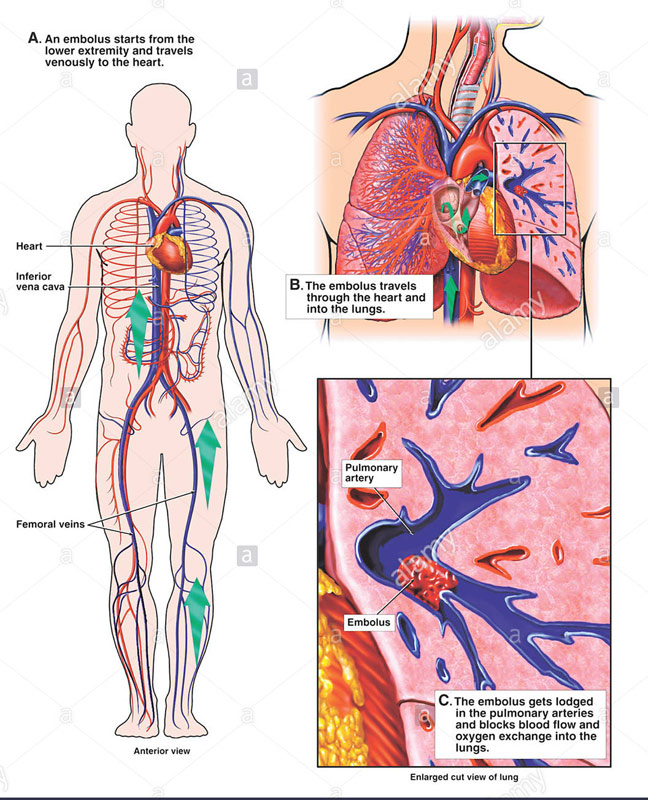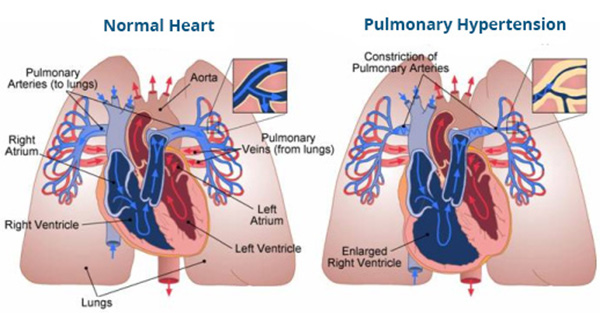
PULMONARY EMBOLISM
What is pulmonary embolism?
Pulmonary embolism is the blockage of pulmonary circulation from a blood clot. In most cases, the clots are small, but if the thrombus is large it can be lethal.
What are the symptoms?
The most common symptoms are:
- Sudden difficulty in breathing - breathlessness
- Acute chest pain
- Cough
- Haemoptysis
- Palpitations
What causes pulmonary embolism?
In most cases, pulmonary embolism is caused by a thrombus in the leg that is released into the bloodstream and ends up in the lungs.
The pulmonary artery can be clogged more rarely by cancerous emboli, air bubbles, amniotic fluid (in pregnant women), and fat released into the blood vessels.
Factors that may increase the risk of pulmonary embolism are:
- When someone is lying in bed for a long time eg. after surgery or a serious illness, or when sitting for a long time in an airplane or car trip
- Blood clotting disorders
- Certain diseases, such as cancer, nephrotic syndrome, systemic lupus erythematosus, liver diseases, etc.
- Pregnancy
- Taking contraceptive medications or hormone therapy
How is the pulmonary embolism diagnosed?
HIGH CLINICAL SUSPICION IS WHAT LEADS TO THE DIAGNOSIS OF PULMONARY EMBOLISM. Since this is a potentially lethal condition, it is preferable to start anticoagulant treatment until a chest CT angiogram is performed and the condition is excluded.
Treatment
The embolism treatment includes anticoagulant pills or injections for a period of not less than three months depending on the cause. When the embolism is severe and cardiac function is affected, thrombolysis should be performed. Thrombolysis is a process by which the thrombus is immediately dissolved and circulatory release is achieved, but there is a substantial risk of bleeding.
PULMONARY ARTERIAL HYPERTENSION

Pulmonary Arterial Hypertension is the hypertension of the pulmonary circulation.
The causes of pulmonary hypertension are:
- Idiopathic pulmonary hypertension
- Cardiac failure
- Chronic obstructive pulmonary disease (COPD)
- Diffuse interstitial lung diseases - pulmonary fibrosis
- Pulmonary embolism and other rare diseases of pulmonary circulation
- Diseases of the connective tissue
- Medicines and food (colza oil-toxic oil syndrome)
- Rare infections (histoplasmosis) and HIV.
As evidenced by the heterogeneity of causative agents, treatment is adjusted and ranges from the use of anticoagulant drugs, oxygen therapy to surgical treatment in rare cases.
Idiopathic pulmonary hypertension is a rare entity in which research has focused on the recent years, trying to highlight the particular principles governing pulmonary circulation.



